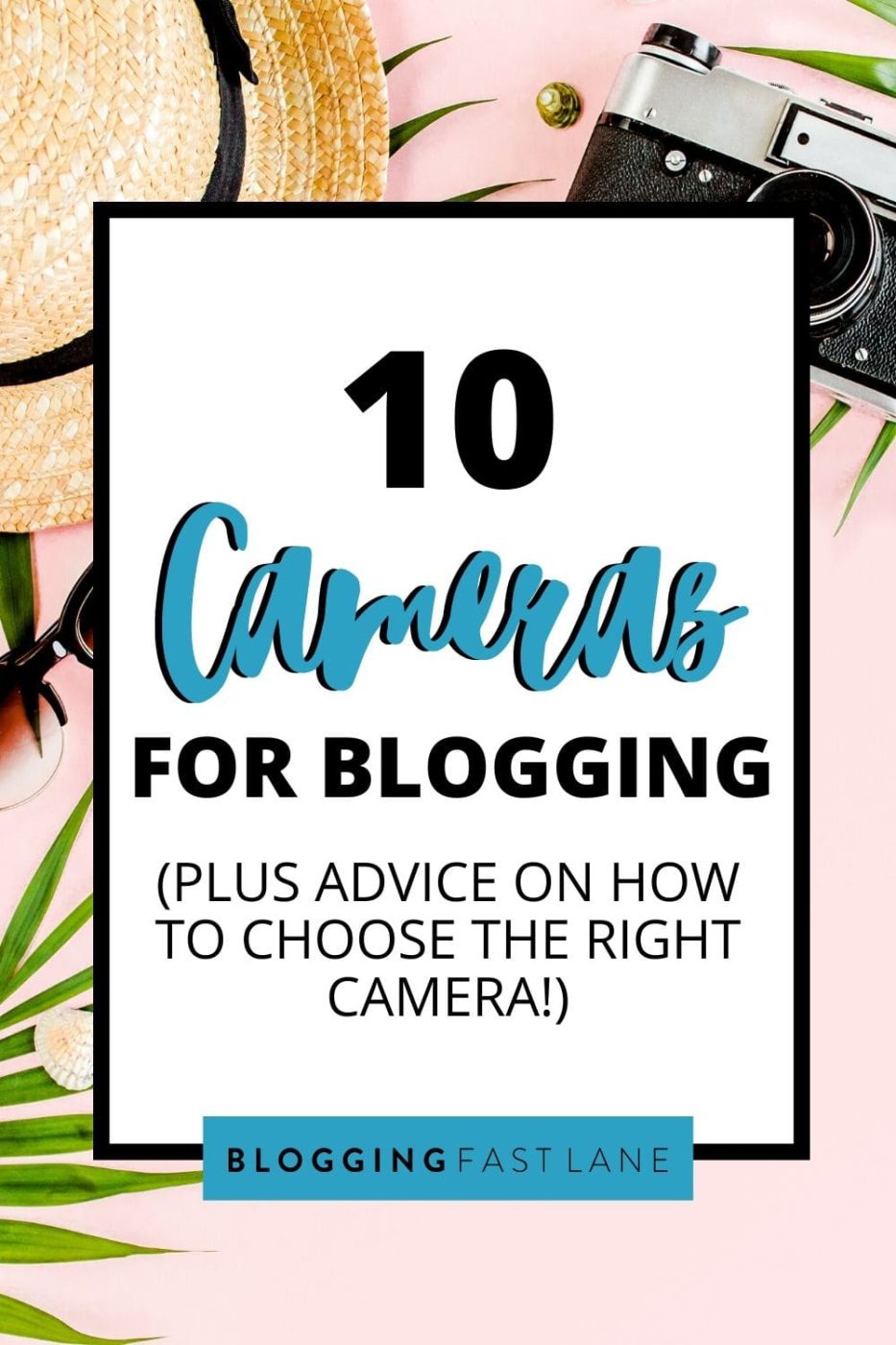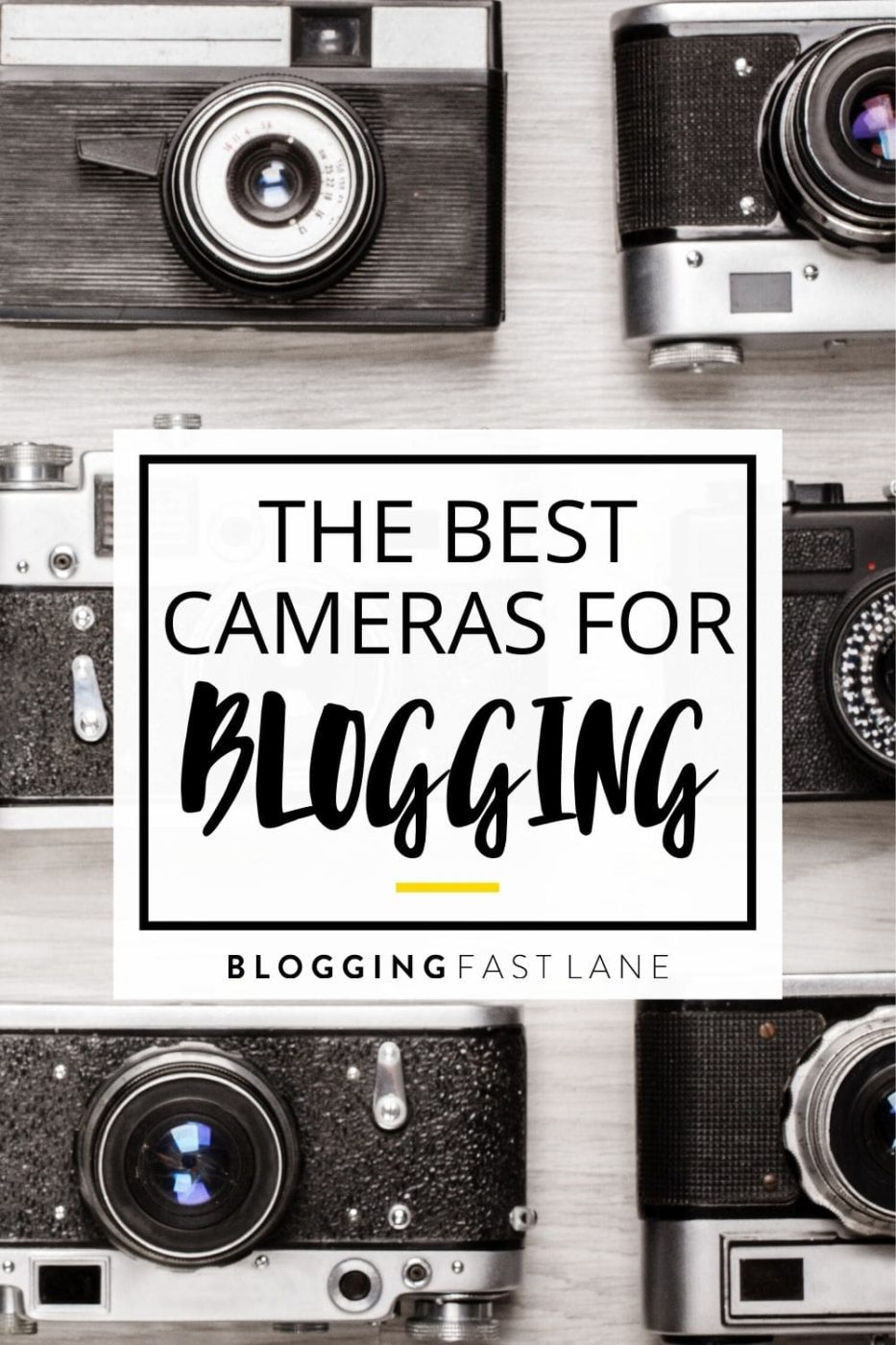This article may contain affiliate / compensated links. For full information, please see our disclaimer here.

If a picture is worth a thousand words, you’d better have a stellar camera to take photos with!
Photography is a super important aspect of blogging because images round out content and captivate readers. As such, having one of the best cameras for blogging can make all the difference in your website’s look and feel.
But with millions of camera options out there, how can you find the one that suits your blogging purposes best?
Luckily, we’re here with 10 recommendations of the best cameras for blogging so that you can choose a device that will make your blog pictures pop. Regardless if you are a pro photographer or someone who is just looking to get their hands wet on photography, this article is for you.
Our Picks for the Best Blogging Cameras
- Best Camera for Blogging on a Budget: Canon Rebel T7i | Fujifilm X-A5
- Best Camera for Beginner Bloggers: Canon Powershot G7X Mark II
- Best Camera for Travel Bloggers: Nikon D5600 | Sony a6500
- Best Camera for Food Bloggers: Sony RX 100 VII
- Best Camera for Lifestyle Bloggers: Fujifilm X 100V
- Best Camera for Sports Bloggers: Panasonic Lumix DC-GH5
- Best Camera for Mom Bloggers: Fujifilm X-T20
- Best Camera For Vlogging: Canon EOS 70D
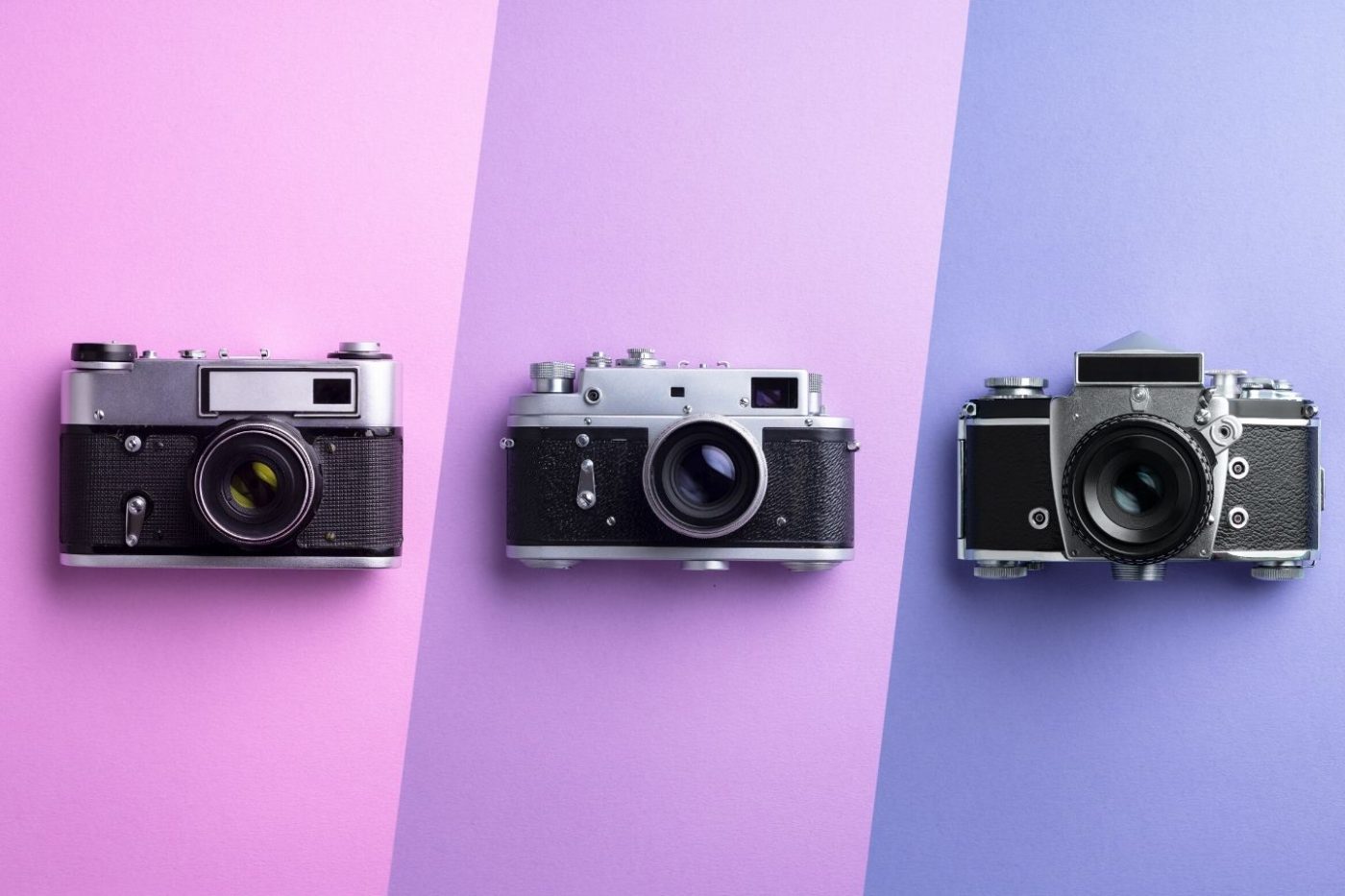
Blogging Cameras Comparison Table
Camera | Type | Price | Weight (without lens) | Battery Life (shots per charge) | WiFi? | View Item |
DSLR | $ | 14.7 oz | 970 | Yes | ||
DSLR | $ | 1.06 lbs | 600 | Yes | ||
DSLR | $$ | 1.66 lbs | 920 | Yes | ||
Mirrorless | $$$ | 1.73 lbs | 410 | Yes | ||
Mirrorless | $$$ | 1 lb | 350 | Yes | ||
Mirrorless | $$ | 13.5 oz | 350 | Yes | ||
Mirrorless | $ | 12.7 oz | 450 | Yes | ||
Point and Shoot | $ | 11.3 oz | 265 | Yes | ||
Point and Shoot | $$$ | 10.7 oz | 260 | Yes | ||
Point and Shoot | $$$ | 1.05 lbs | 350 | Yes |
10 Best Cameras for Blogging
To help you find the best option, here’s a breakdown of 10 of the best cameras for blogging! Each of these cameras is unique in their own right, offering different benefits to users.
The one thing they all have in common is they’ll create awesome visuals for your blog.
Read on to check out our specific recommendations!
Best DSLR Cameras for Blogging
DSLR or Digital Single Lens Reflex cameras are a top pick for bloggers looking for the best image quality possible. Though these cameras have large bodies and bulky lenses, they take professional images that are sure to stand out on any blog.
Nikon D5600

Best For: Entry-level photography, travel bloggers
Key Specs: 24 MP APS-C sensor | Full HD 1080p video at 60fps | 3” Vari-angle touchscreen | Bluetooth & WiFi
A stand-out entry-level DSLR, the Nikon D5600 is perfect for any budding blogger.
The camera body isn’t too bulky and the battery life is long-lasting, allowing users to slip it in their bags and head out for a full day of shooting. Plus, it’s intuitive and easy to use so you can spend more time taking pictures and less time fiddling with settings.
If you plan on taking a lot of pictures in the evenings or at night, this camera is an especially great choice as Nikon is well-known for having some of the best low light sensors in their cameras.
You can also shoot video with the Nikon D5600, which shoots 1080p at 60 frames per second. Plus, there are lots of lenses to choose from, giving you plenty of versatility with your shots.
Canon Rebel T7i

Best For: Entry-level photography, outdoor bloggers
Key Specs: 24 MP APS-C sensor | 1080p video at 60fps | 3” Vari-angle touchscreen | 45-point All Cross-type AF
Another awesome starter camera, the Rebel T7i is Canon’s best DSLR for beginner photographers.
It doesn’t come with all the bells and whistles of some of the more advanced Canons, but it has a solid automatic mode and good autofocus, allowing anyone to take stellar photos, regardless of experience level.
Using a Canon for blogging comes with huge perks, mainly having access to Canon’s huge range of lenses, all of which should be compatible with the T7i.
Besides taking some top-notch photos, the Canon Rebel T7i is pretty lightweight and not too bulky, and it comes with a touchscreen display and a pretty good battery life.
It also shoots video at 1080p up to 60 frames per second, and isn’t nearly as pricey as some of the higher-end models.
Canon EOS 70D

Best For: Vlogging
Key Specs: 20.2 MP APS-C sensor | 1080p at 30fps | 3” ClearView II LCD touchscreen | Movie Servo AutoFocus
For a slight step up in the DSLR department, try out the Canon EOS 70D, a blog camera Canon perfect for vlogging.
While it doesn’t have 4K video, the Canon EOS 70D is still great for creating YouTube videos, especially when coupled with the video creator kit which comes with a microphone and lens.
This camera boasts a lightweight, compact feel without sacrificing on quality of image or video and is easy to tote around on any kind of adventure. It comes with an easy to use touchscreen display and a sharp facial autofocus, perfect for keeping your face looking flawless while you film your next tutorial or webinar.
In fact, the autofocus is a huge draw to this camera as it keeps subjects looking crystal clear even on video.
If you’re not fully convinced, the Canon EOS 70D also has WiFi capabilities to quickly pull footage from the camera onto your smartphone. There’s also a Canon EOS Remote smartphone app that you can control the shutter, focus and aperture from!
Talk about hands-free shooting.
Best Mirrorless Cameras for Blogging
Mirrorless cameras have been hailed as a godsend in past years as they offer the capabilities of a DSLR in a much smaller body. Mirrorless cameras still have interchangeable lenses but are far less bulky and easier to tote around.
If you often find yourself taking your camera to restaurants, events, or even on your travels, we recommend getting a mirrorless camera due to their portability.
Panasonic Lumix DC-GH5

Best For: Sports/Action bloggers, mom bloggers
Key Specs: 20 MP Live MOS sensor | 4K video at 60fps | Splash/Freeze-proof design | Ultra fast motion detection
The Panasonic Lumix DC-GH5 is a super solid all-rounder pick when it comes to a mirrorless camera for blogging.
The compact, lightweight body makes it ideal for taking on adventures and the advanced features ensure that your photos will be of professional quality.
Sitting in a weather-sealed (splash, dust, and freezeproof) body, this camera is ready for whatever you have to throw at it. The 20.3 megapixel sensor ensures sharp images and the 4K video leads to knockout footage if you’re more of the vlogger type. Coupled with built-in image stabilization, you’ll never have a blurry shot.
No matter what you’re shooting, the Panasonic Lumix DC-GH5 can get the job done with features like ultra fast motion detection and focus, and a super high-resolution live view finder.
This is the ideal camera for blogging if you’re a sports, wildlife or mommy blogger trying to capture a toddler streaking by!
Sony a6500

Best For: Action bloggers, low light photography
Key Specs: 24 MP APS-C sensor | 4K video at 30fps | Touchscreen control | 425 phrase-detection autofocus points
Another great mirrorless option, the Sony a6500 packs a punch when it comes to shooting.
The body is quite small and lightweight and can be coupled with a huge range of lenses to get the shot you’re dreaming of. In fact, the camera is designed to fit in the palm of your hand!
The Sony a6500 performs spectacularly in low light and can shoot 11 frames per second with a knockout autofocus, great for capturing fast moving subjects. The autofocus in this camera is really unique because it captures 425 focus points to make sure that everything is razor sharp.
This camera shoots video in 4K with 5-axis optical image stabilization, features a touchscreen display, and has a weatherproof body to protect the tech from any potentially damaging effects.
It’s hard to go wrong with Sony, and the a6500 is an unforgettable pick!
We love Sony cameras and personally use the Sony a7ii. Although we love it, we wish we bought the a6500 instead as it’s a lot smaller and less expensive. We recommend getting the a6500 and pairing it with the prime lens.
Fujifilm X-T20

Best For: Intermediate photographers, craft bloggers, travel bloggers
Key Specs: 24 MP APS-C sensor | 4K video, electronic viewfinder & 3” tilting touchscreen monitor | Intelligent flash and filters
The Fujifilm X-T20 is actually one of the littlest cameras with interchangeable lenses that’s on the market, with a body that weighs less than a pound. It’s easy to forget about it when it’s in your bag (hey, it weighs next to nothing!), but ultra convenient to spend a day shooting with.
Images taken with this camera are clear, sharp and colorful, keeping any moment you capture particularly special. It also has unique features like the Auto Mode Switch Lever which picks out ideal shooting settings so you don’t have to worry about fiddling with manual mode. That said, its manual mode rivals that which you would find in a DSLR, satisfying for even advanced photographers.
The Fujifilm X-T20 was built with toughness in mind, featuring a magnesium alloy shell with rubber coating to endure bumps and jostling, and to create a camera grip. It also has a vintage-y feel to it, if you’re looking for a good-looking camera.
Fujifilm X-A5

Best For: Lifestyle bloggers, travel bloggers, bloggers on a budget
Specs: 24 MP APS-C sensor | 4K video at 15fps | 3” LCD tilting touchscreen | Panorama mode
Small but stylish and stockpiled with features, the Fujifilm X-A5 is a striking blogging camera that’s great for anyone looking for something little and powerful for their images.
It doesn’t get much smaller than this palm-sized mirrorless camera, but what’s so amazing is that it’s packed with DSLR-like features in a teeny tiny body.
The photos and videos are exceptionally high quality, and the camera gives you full manual control when you want it. This mirrorless blogging camera also comes with Bluetooth and WiFi capabilities to quickly and easily transfer photos to a smartphone or tablet.
Something unique about the Fujifilm X-A5 is that it comes with a swivel screen that you can move around to get just the right angle. Whether it’s blades of grass or a flawless selfie, this camera is the perfect choice for interesting shots.
The camera can also capture panoramas, ensuring you can fit everything in your image!
Best for landscape photography and selfies, this camera is much less expensive than some other mirrorless cameras on the market and looks cute with its aluminum and leather body.
Best Point-and-Shoot Cameras for Blogging
For the ultimate portability in a camera for blogging, a point-and-shoot is the way to go.
Simply slide these bad boys in your back pocket and head out on your way! Point-and-shoots have a small body and a single retractable lens, perfect for adventuring around with.
Point-and-shoot cameras are great for budding photographers as they’re really easy to learn how to use and take great shots with minimal effort. Point-and-shoots are also small with a standard lens, which is ideal if you don’t want to spend a fortune or commit to learning more advanced photography techniques.
Canon PowerShot G7X Mark II

Best For: Lifestyle bloggers, craft bloggers, mom bloggers
Specs: 20.1 MP 1-inch sensor | Full HD 1080p at 60fps | 3” tilting touchscreen | 31-point autofocus
A small, light, and ultra portable point-and-shoot camera, the Canon PowerShot G7X Mark II is great for bloggers who don’t want to be weighed down by lenses and additional equipment. This camera can easily be slipped into a jacket pocket and pulled out whenever the perfect shot arises.
This blogging camera is affordable, especially for those looking for something that also shoots good video on top of images. It has 8 frames per second burst shooting and Face Detect autofocus to take stunning portraits.
Your pictures will come out still and sharp, with the dynamic image stabilization that uses both in-lens and electronic image stabilization. The lens also offers decent focal length options considering it can’t be changed.
This is an excellent point-and-shoot blogging camera for anyone on a budget who’s looking for a great option.
Sony RX 100 VII

Best For: Fashion bloggers, travel bloggers, food bloggers
Specs: 20.1 MP 1-inch sensor | 4K video at 30fps | 3” 180° tilting touchscreen | 24-200mm zoom lens
A compact camera with unrivaled features, this is a point-and-shoot for beginner and advanced photographers alike.
What makes the Sony RX100 VII stand out is the autofocus which is super fast and features real-time tracking. This results in crystal clear and sharp images, no matter what you’re shooting.
It also has enhanced image stabilization and an external microphone jack for shooting vlogs in movie quality.
For such a small camera, the zoom capabilities are out of this world, allowing you to narrow in on a subject without the image going grainy. It also shoots remarkably well in lowlight, maintaining high resolution.
From landscapes to portraits, the Sony RX100 VII is a point-and-shoot worth having for blogging.
Fujifilm X100V

Best For: Lifestyle bloggers, fashion bloggers, DIY bloggers
Specs: 26 MP APS-C sensor | 4K video at 30fps | 3” tilting touchscreen| Weather-resistant
A simple point-and-shoot with the iconic Fujifilm camera look, the X100V is a great piece of equipment for any blogger to have.
The lens on this new model has been enhanced to take higher resolution photos, cut out distortion, and improve close-up shooting. The Fuji X100V also has a hybrid viewfinder which allows users to look through the optical viewfinder or take pictures using the OLED electronic viewfinder. Either way, bloggers can get a clear shot while using this camera.
A fun feature of this blogging camera is the touchscreen display that tilts two ways, letting photographers get their dream shot uninhibited.
At the heart of it, this camera performs well in low light, takes sharp and vivid photos, and is well-renowned for enhanced colored photography. If you’re looking for the one of the best blogging cameras, this is certainly a top pick!
Camera for Blogging vs. Smartphone?
If you have a decent smartphone, you may be wondering why you even need a camera for blogging in the first place. This is totally valid as most smartphones have stellar cameras that allow you to capture moments throughout the day and on the go.
But like everything, smartphone cameras have their limits and don’t really stand up to the image quality that blogging demands.
If you’re going to be putting yourself online and competing with other blogs, it’s important that you have a camera to ensure your visuals are up to par. This means clear images, flawless video, and high quality standards to curate a beautiful-looking blog.
While there are some smartphones that have excellent technology, oftentimes they cost more or if not the same as getting a standalone camera. If you have the budget, we recommend getting a separate camera which will greatly help you improve your photography skills.
Here are some reasons why smartphone cameras just don’t cut it for blogging:
- Smartphones give you very little control over the images you take. Since everything is automatic, it can be challenging to get the lighting just right or focus a frame exactly how you want it. On the other hand, cameras have a huge range of settings and capabilities that users can play with to get the result they had in mind.
- Smartphones offer really limited zoom capabilities. While yes, they can zoom in on a subject, it’s purely computational zoom which results in a pixelated, grainy outcome. Cameras operate with optical zoom which not only covers a wider range but allows a rather clear image to be taken.
- Smartphone battery life is abysmal compared to cameras, especially if you’re taking lots of photos. Because smartphones are more than just cameras (phone calls, text messages, Facebook notifications, Instagram DMs, the list goes on and on), of course they’re going to run out of battery much faster than a device whose sole purpose is to take photos. If you’re spending a day shooting or filming, you can bet a camera battery life is going to last way longer than that of a smartphone.
6 Things to Consider When Buying a Camera for Blogging
While it may be tempting to grab the first camera that looks good, there are a few components to keep in mind when buying a camera for blogging.
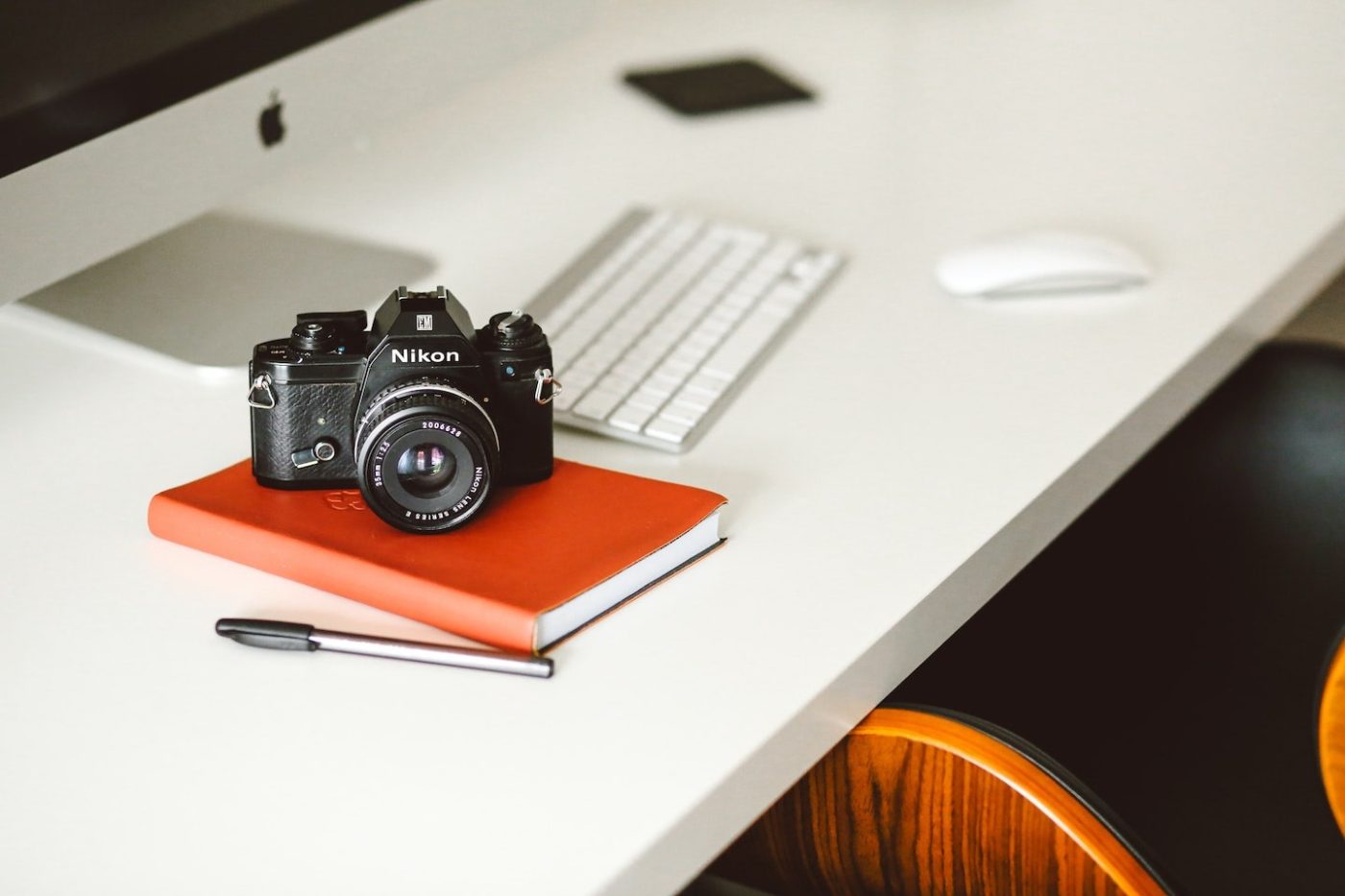
Type of Camera
The first consideration to keep in mind when buying a camera for blogging is what kind of camera do you actually want?
Typically, there are 3 types of cameras that work well for blogging: DSLR, mirrorless, and point-and-shoot. Let’s break this down a little.
DSLR stands for Digital Single Lens Reflex and is constructed of two parts: the body of the camera and the lens. These are the larger, fancier-looking cameras with detachable lenses that take the best quality photos possible.
On the other hand, we have point-and-shoot cameras that are simple to use and compact. The body is generally pretty small and the camera shoots on an automatic setting. The lens isn’t removable on point and shoot cameras and they aren’t as advanced as DSLRs, but they take some great images.
Point-and-shoot cameras are a solid choice for beginner bloggers and photographers who aren’t too worried about the endless camera settings.
Finally, a hybrid of the two, we have mirrorless cameras which have a body comparable to point and shoots but have detachable lenses like DSLRs.
Mirrorless cameras give users the best of both worlds. They take extremely high quality photos but without the extra weight that comes with a large, bulky body. While you won’t find as many lenses for mirrorless cameras as you will for DSLRs, they still give you quite a range in what you can do with them and you’ll have the ability to control the outcome of your final photo.
The type of camera you choose for blogging really depends on your skill level and what you plan to do with it. If you’re just looking to take some casual photos, a point-and-shoot will do. But if you’re hoping to get more technical, high quality shots, it may be worth investing in a DSLR or mirrorless camera.
Price
Price is another prime factor when it comes to choosing the best camera for blogging.
It shouldn’t be a surprise that cameras don’t come cheap. In fact, they can be outrageously expensive. But the thing about cameras is they’re an investment and most of the time, you get what you pay for.
If you’re looking for a high quality camera that’s going to last you for years to come, you’ll probably be spending more than you would on a simple point-and-shoot.
Typically, DSLRs and mirrorless cameras are the most expensive, due to the advanced technology found in their bodies and especially due to the cost of lenses.
Sometimes DSLR and mirrorless cameras come with a single lens, but the beauty of these bad boys is being able to switch them out based on the shooting circumstance. That makes these cameras more expensive because you have to purchase multiple lenses to get your shot just right.
On the other end of the price spectrum, point-and-shoot cameras tend to be much less expensive than cameras with removable lenses. Because they are fairly basic pieces of equipment and don’t have the additional bells and whistles you’ll find with DSLRs and mirrorless cameras, point-and-shoots are often at a more accessible price point.
But at the end of the day, always remember that no matter what you’re looking for, there is a camera out there no matter what your budget is!
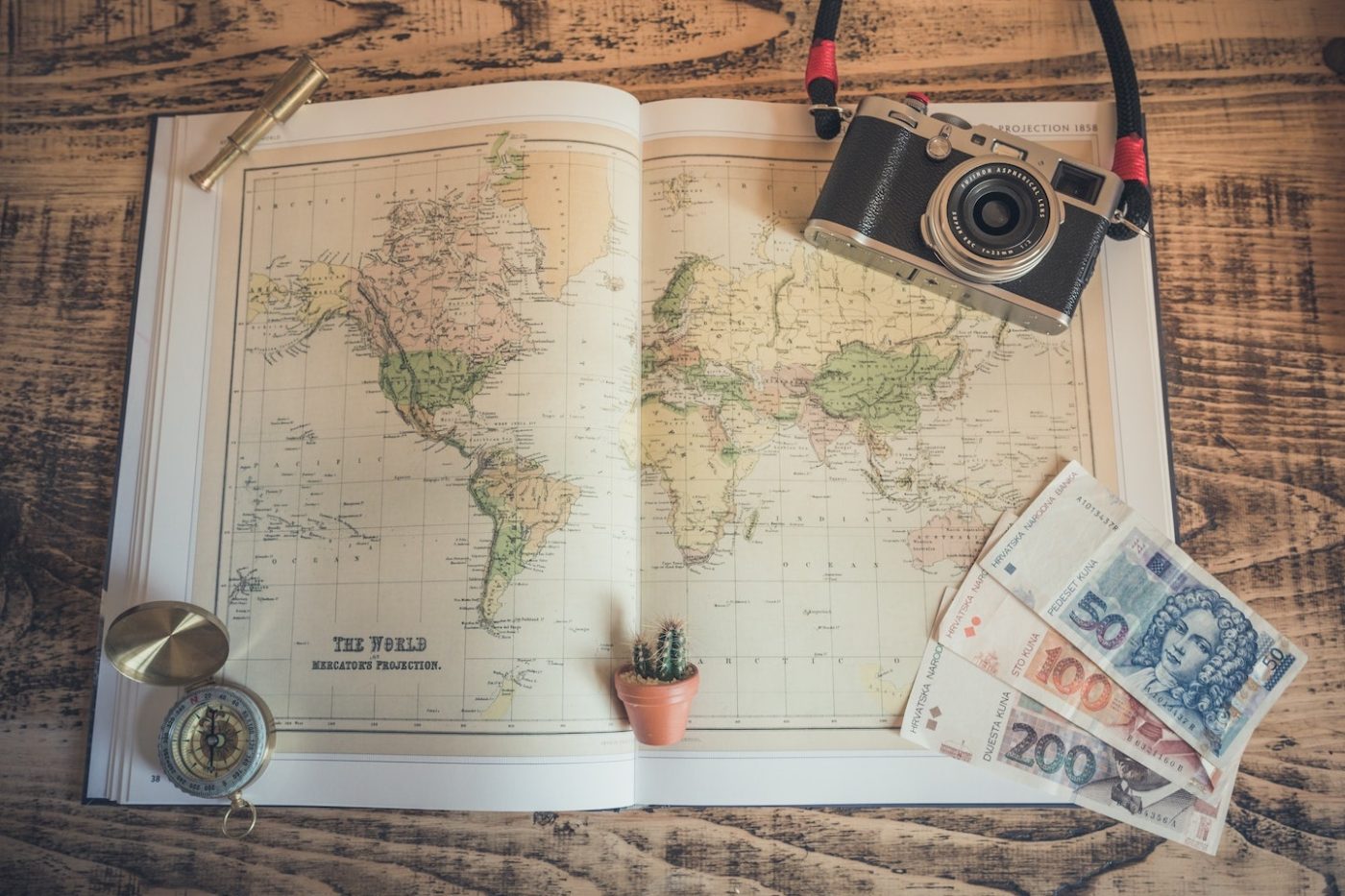
Image Quality
One of the most important considerations when it comes to the best cameras for blogging is the image quality. Generally, image quality isn’t a static variable, but rather one that changes with settings and camera capabilities.
If you’re looking for a camera that has top-notch image quality, the telling factor is to look at the camera’s technical specifications.
Sensor Size
The sensor size affects image quality as it regulates how much light is used to create a photo. Typically, the larger the sensor, the better the image quality.
That being said, the sensor takes up quite a bit of room in the camera’s body which is why most cameras with a large sensor (aka able to take high quality photos) tend to be DSLRs.
ISO
Hand in hand with sensor size, you should take note of ISO which determines how responsive a sensor is to light. When you increase a camera’s ISO setting, it’s possible to take photos in low light without having to use a flash.
If image quality is the main consideration, try to choose a camera with a minimum ISO of 1600.
Megapixels
Megapixels refers to the resolution of a camera, with more megapixels creating a higher quality image. Cameras can go nuts when it comes to megapixels, but you’ll probably be set with something around 20MP if you’re primarily using your camera for blogging.
Frames Per Second
Frames per second is exactly what it sounds like: the number of images a camera can take per second.
If you’re a blogger shooting lots of sports, wildlife or other fast-moving subjects (like children), it may benefit your image quality to choose a camera with a high frame per second.
Zoom
We all know what it’s like to zoom in on something and have it turn so blurry it’s impossible to make it out anymore. Well, this is generally because the camera is utilizing digital zoom, which is basically just making an image appear closer without actually modifying the lens.
On the other hand, optical zoom is the ability to bend light to make objects in the distance appear to be closer. This is the type of zoom you should be focusing on when it comes to choosing the best camera for blogging if you don’t want your subjects turning into grainy messes when you zoom in.
Manual Mode
One last consideration when it comes to image quality is choosing a camera with manual mode.
Most blogging cameras come with a standard automatic mode that makes shooting a breeze. But if you want to make the most of your camera and have direct control over image quality, it’s best to choose a camera with manual mode.
With a manual mode available, you can play with all the aforementioned settings to make your photo exactly what you were imagining.
Take this photo below taken with our Sony a7ii camera + kit lens. We were able to tweak the image and capture the waterfalls this way by playing around with the shutter speed which we could have only done if the camera has a manual mode.
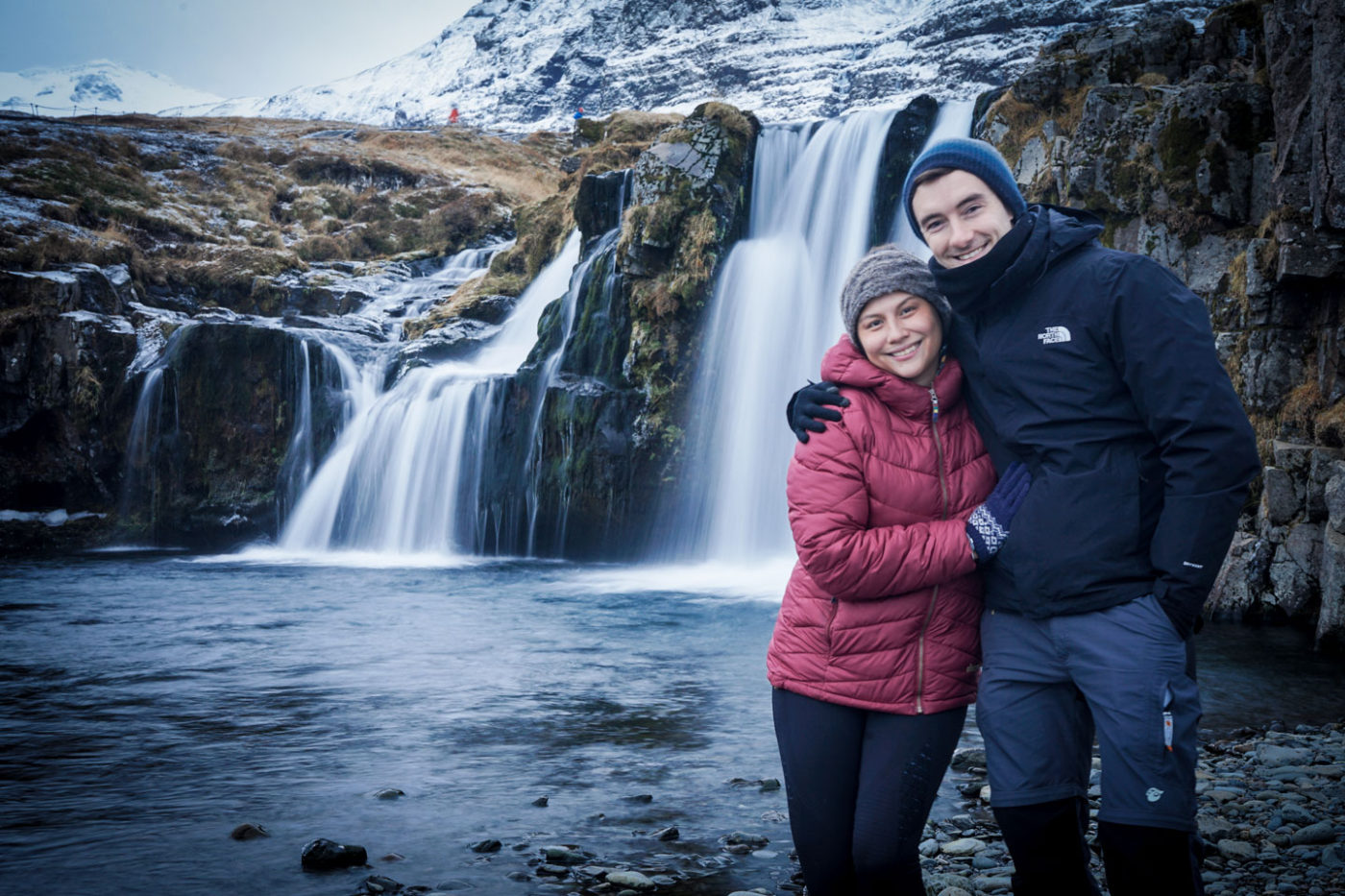
Size & Weight
Size and weight should absolutely factor into your decision when buying a blogging camera.
As I’ve mentioned before, DSLRs tend to be the largest of the lot and fairly heavy as well, especially when you factor in lenses, batteries, and other equipment to keep the camera going.
While the image quality on a DSLR is certainly the best, it can be exhausting to lug around one of these giant cameras everywhere you go. If you’re a blogger who’s constantly on the move, you may want to opt for something smaller and more lightweight.
That being said, if you’re a food or DIY blogger, having a DSLR may make sense since most of the photography is probably going on in your house. If you don’t have to move around frequently, a DSLR is a great choice.
For bloggers looking for something lightweight without sacrificing image quality, mirrorless cameras are one of the best options as the body tends to be way less heavy and the lenses are totally interchangeable.
But if you’re a blogger who simply wants to slip a camera in their pocket and get on with their adventures, a point-and-shoot may serve you best as they weigh the least and take up less space than a smartphone.
While it may be tempting to get the fanciest camera you can find, have a hard think about what you’ll primarily be using the camera for. Get something that you’ll actually take along on your blogging adventures, rather than have it sitting and collecting dust in the corner of your room.
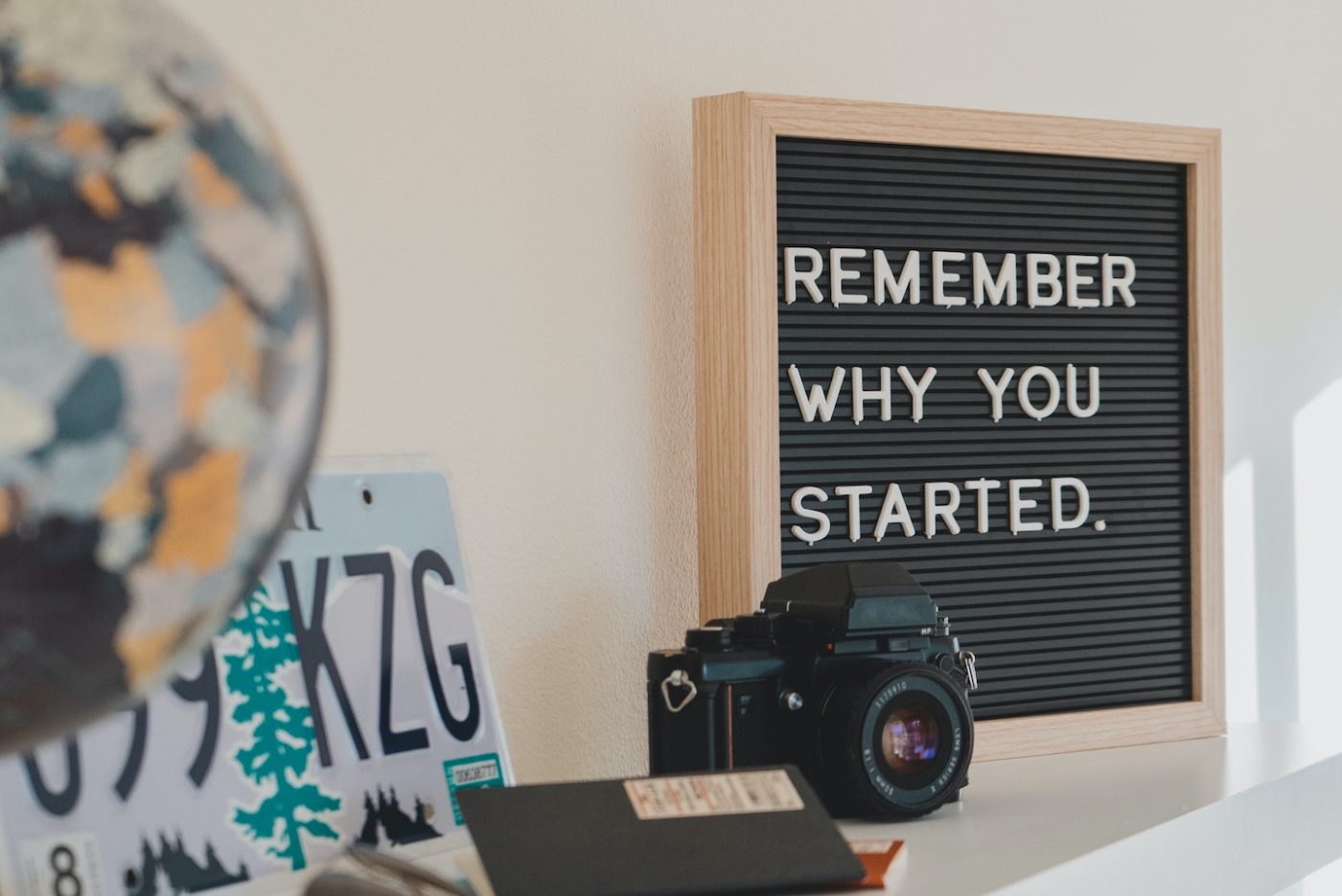
WiFi Capabilities
While you may brush off a camera with WiFi as pointless or far from useful, you’d be surprised at how handy an integration this is.
If you are active on social media or plan on sharing images or videos for your blog on social networks, having WiFi is super handy.
All you have to do is turn WiFi on, send your images through to your smartphone, and upload them directly. This cuts out the annoying hassle of having to connect your camera to your computer and then connect your phone to your computer to get your pictures on Instagram.
Some cameras even have a designated app that allows you to control the shutter right from your smartphone. Talk about selfies for days!
When searching for the best camera for blogging, WiFi is a serious component to keep in mind. It will save you lots of time and effort down the road when it comes to curating your social media feeds or controlling your camera.
Video Abilities
One final consideration to keep in mind when choosing the best camera for blogging is its video abilities.
If you’re a blogger who plans on recording vlogs, montages, how-to instructions, or any other kind of video footage, it’s worth choosing a blogging camera that has this capability built in.
Even if you aren’t planning on filming videos right off the bat, picking a camera with solid video capabilities will prevent you from having to purchase an additional camera for videos down the line.
Make sure that your blogging camera has at least 1080p video resolution… even better if it’s 4K Ultra HD! You should also ensure that the camera has a frame rate of between 24 to 34 frames per second, as well as in-body image stabilization and external microphone support.
All of this will lead to videos of a much higher quality than if they were shot on your dinky iPhone.
How to Choose a Camera for Blogging
I get it, choosing a camera for blogging can be wildly overwhelming. With basically infinite options, how do you choose a camera that’s right for you?
Here are some questions to ask yourself in order to figure out if a specific camera is the best choice.
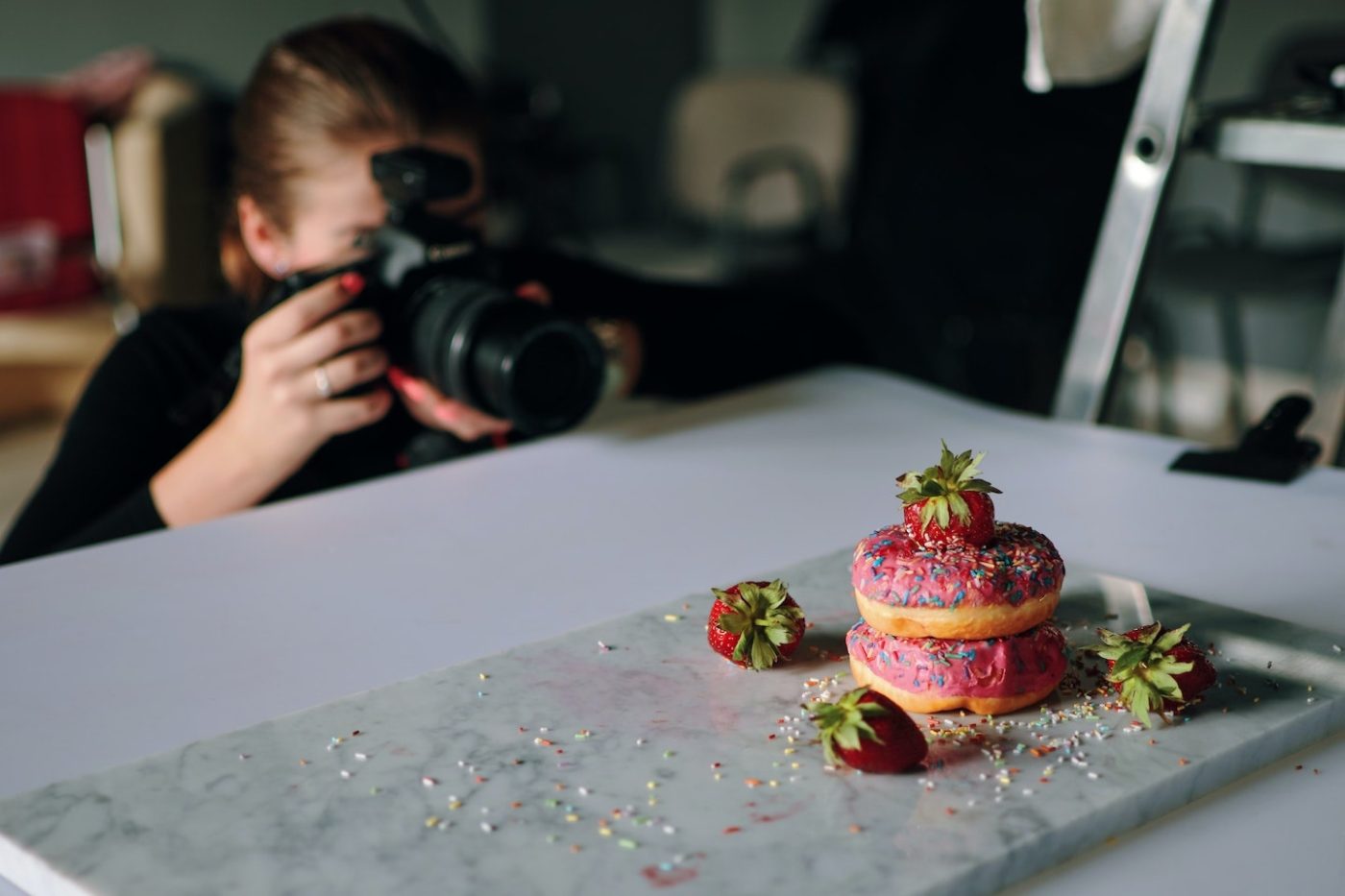
Does It Meet Your Specific Needs?
Cameras have tons of bells and whistles these days. They’re fancy, high-tech, and have lots to play with.
But while these cameras are ultra tempting (I mean, who doesn’t want a camera that can put filters on a dog?), ask yourself if they really fit your needs.
While yes, this camera will probably have multiple uses, the primary purpose of it is for blogging. So you should first determine whether the camera you have in mind will meet your specific blogging needs.
- If you’re a travel blogger, is the camera lightweight and compact enough to fit in your carry-on bag?
- If you’re a beauty blogger, does the camera have high quality video functions for your vlogs?
- If you’re a sports blogger, does the camera have a high frame per second?
This is only the tip of the iceberg, but this should give you a sense of what to ask yourself when trying to decide if a camera meets your specific needs. And if the answer is no to any of the questions you asked yourself, the hunt continues!
Does It Suit Your Budget?
Yes, it’s important to get a camera that’s high quality, but this doesn’t mean purchasing the most expensive option!
There’s no sense in completely breaking the bank for a camera when there are thousands of choices at a wide range of price points.
Don’t drain your bank account on a blogging camera… I can promise you it’s not worth it, no matter how tempting the camera looks.
Instead, really ask yourself whether the camera you like is within your budget… and if it’s not, don’t be afraid to keep looking! Chances are, you’ll come across something very similar that’s much more reasonably-priced.
Does It Fit Your Experience Level?
Last but not least, be sure to choose a camera that fits your experience level.
If you’re a total beginner, it may make the most sense to get an automatic point-and-shoot until you’re more comfortable with photography.
If you’re more intermediate, a standard mirrorless camera is a great place to start.
For advanced photographers, a DSLR is the way to go because of how much you can mess around with the functions. Plus, more advanced photographers tend to enjoy shooting in manual mode so they can control each function of the camera. This mode is typically most common with DSLRs and mirrorless cameras.
Let me assure you that the last thing you want to do is get a super fancy camera and never use it because you don’t know how! Like many things in life, photography is a skill that’s developed with lots of practice. As such, it doesn’t make sense to get the most advanced equipment if you’re at a beginner level.
So be sure to properly assess the level you’re at with photography and get a camera that suits it. This ensures that your camera will compliment your skills rather than overwhelm you when it comes time to take photos.
After reading this article, you should be a camera pro and ready to pick the perfect blogging camera for your needs. Remember, starting a business has its costs, and a blog is no different!
While it doesn’t take a ton of money upfront, it’s a good idea to invest in equipment that works well and will last you years to come so that you can run your blog with ease.
Choose a camera that’s going to suit your needs now and down the line. You’ll thank yourself when readers can’t tear their eyes from your images!
Looking for more blogging gear? Check out our recommendations for the best laptops for blogging!
Like this Article? Pin it!
